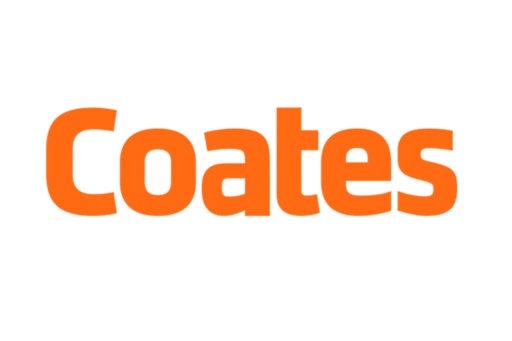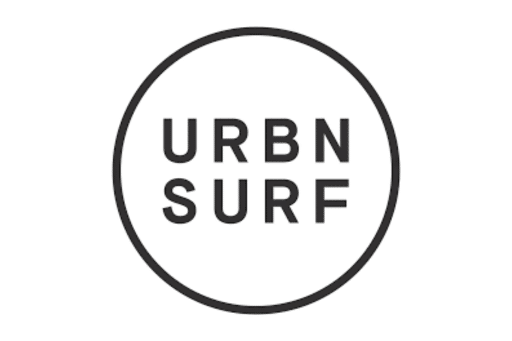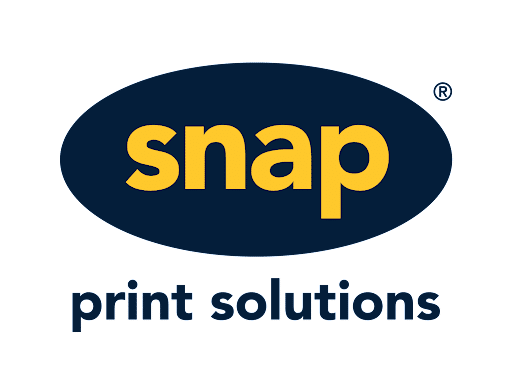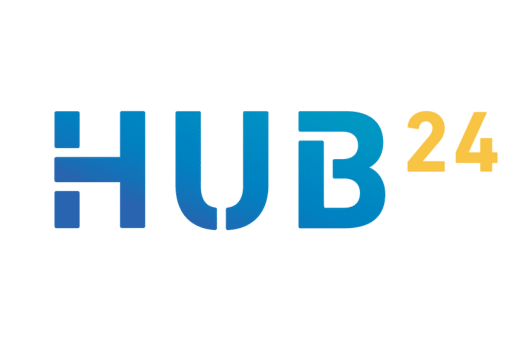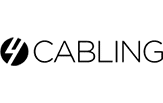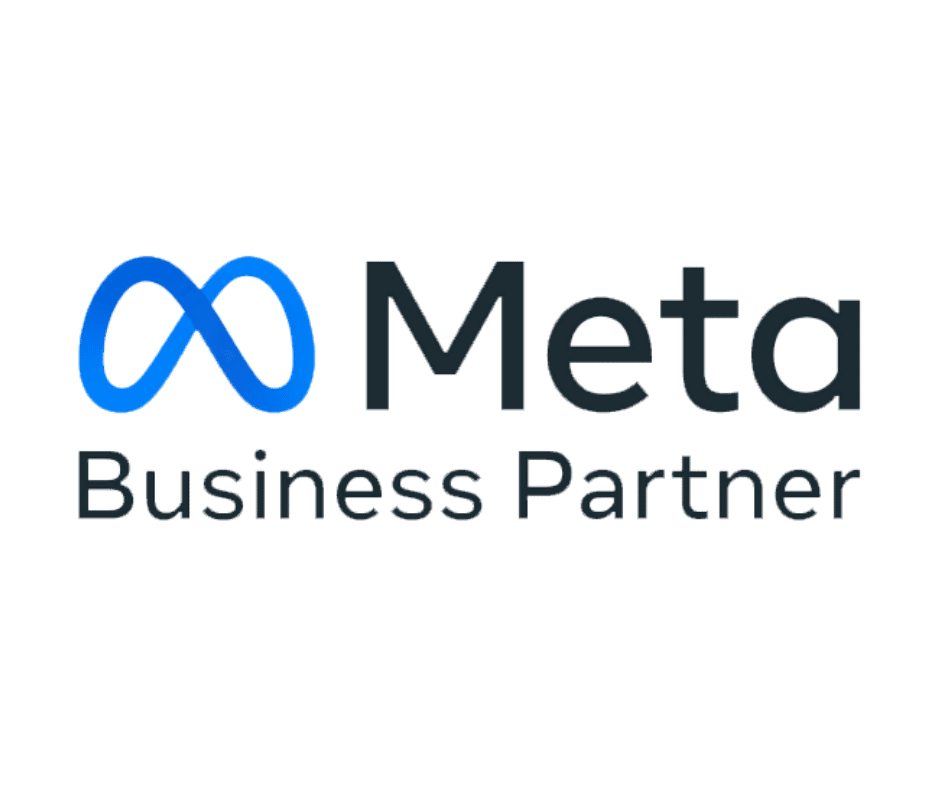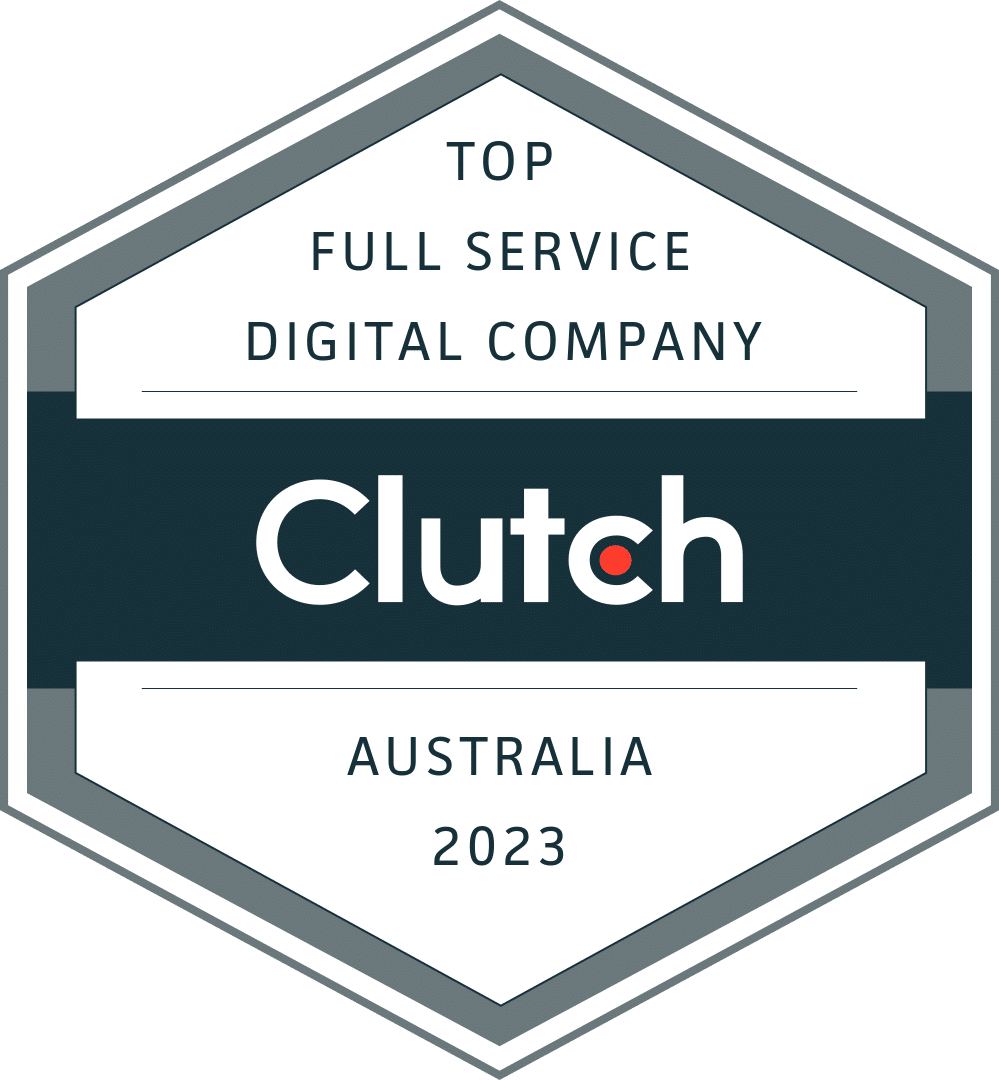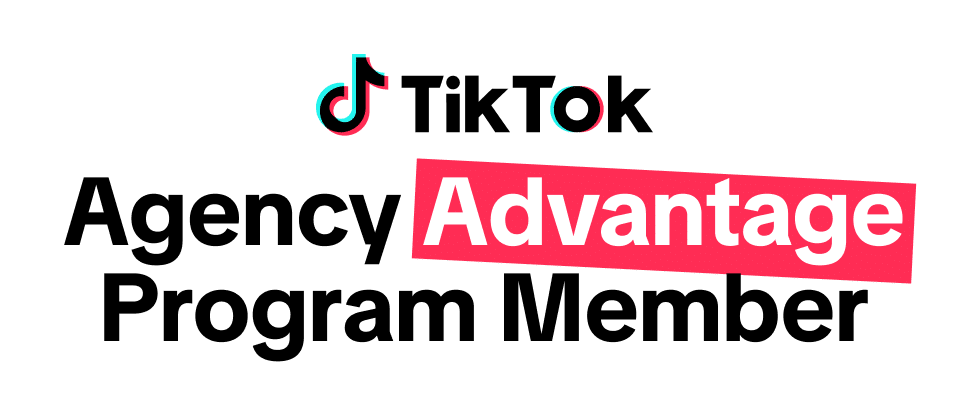Preparing For Black Friday & Cyber Monday
Episode Description:
If you’re running an ecommerce business you need to start planning for Black Friday and Cyber Monday. Ecommerce coach Iain Calvert shares the key factors e-commerce businesses should consider when preparing for this vital period.
Key Takeaways:
- The current ecommerce landscape in Australia
- Strengths continue to lie in strong Google Ads, Meta Ads, email marketing and some form of affiliate marketing for most ecommerce businesses.
- Setting clear sales objectives for Black Friday and Cyber Monday to maximise ROI.
- When to start advertising.
- Practical advice to make your messaging clear and competitive.
- Should you change your title tags and meta description to promote sales?
- How to update your website to promote sales.
Featuring:

Iain Calvert
About the Guest:
Iain (aka “ian”, that double “I” throws a lot of people) is an Australian based eCommerce consultant and trainer that has worked with the likes of Billabong, Vogue, Quiksilver and 100’s others under NDAs. He applies what he learned working for big eCommerce businesses to help independent Aussies businesses sell online. Originally growing up in the UK he started in eCommerce in 2003. He moved to Brisbane in 2011 to join, and eventually end up running, one of the largest independent digital and eCommerce marketing agencies in Australia. He now lives in Melbourne, where he works as an Ecommerce Consultant for a select handful of Aussie brands helping them sell successfully online.
Iain’s definition of eCommerce success is having more money in the bank at the end of the month, rather than ridiculous headline-grabbing quotes like “XYZ now worth $100m”. After working with and seeing the inside of these fast-growing companies he came to learn they aren’t all they seem. He believes that popular doesn’t mean profitable and applies this to eCommerce. Due to restricting the no. of clients in his eCommerce consulting practice, and repeatedly being asked to help other Aussie eCommerce businesses, he setup up Boom - Aussie Ecommerce Training to document what he knows and share it with fellow Aussies or anyone with an interest in selling in Australia. You can visit Iain's website or follow him on LinkedIn.
Podcast Summary: Preparing For Black Friday & Cyber Monday Sales
Leading Australian ecommerce authority, Iain Calvert shares how ecommerce businesses should plan their marketing strategy and campaigns for Black Friday.
With rising ad costs, growing online competition, and high-interest rates resulting in less disposable income for many consumers, how are businesses expected to play in Black Friday sales while still making a profitable return on investment?
This will look different for every business depending on your product, your consumer and the market.
What’s important, however, is to clearly define your objectives for the sales weekend, start to plan early, and ensure you have the right mix of marketing activities to drive action from your ideal consumer.
How to prepare your Black Friday marketing strategy
Clarify your business objectives first.
Before you even start preparing for your Black Friday marketing strategy, it’s crucial that you set clear sales objectives for the business. This will define your overall approach to sales, offers and messaging that you will carry through your ecommerce campaigns.
Remember: it’s a money-in-money-out mentality. If you are promoting 30% off site-wide, at the end of the day that’s 30% less profit for your business.
Consider whether your sales objectives are:
- To clear stock that will soon expire/is out of season.
- To promote a new product.
- To increase your repeat purchase rate.
- To make the most of limited stock you have left.
If you are heavily overstocked, one of the best solutions is a blanket kind of discount. Whether this is 15%, or even 30% off depends on the current financial situation the business is in.
On the other hand, a ‘buy and sell’ or ‘spend and save’ strategy is effective for businesses that may be understocked but still want to create a valuable offer for customers. For example: spend $100 and save $20. Or if your product includes a recurring subscription, you might offer your consumer to get the first 6 months free.
Stick to the fundamentals of a good mix of marketing channels.
The fundamentals work for a reason. The right combination of high-converting Google Ads, Meta Ads, and email marketing campaigns that are backed by compelling landing pages are the backbone to most successful ecommerce campaigns.
That, and consistent messaging that compels your consumers to act.
All of your channels should work seamlessly together to create one overarching and consistent message that will resonate with your audience. This means:
- Inspiring creative assets that are consistent across all channels to promote brand recognition and urgency to purchase.
- A combination of prospecting and retargeting campaigns on Google, Meta, and other media channels that reach your target audience and demand action.
- A set Black Friday landing page (ideally with a countdown timer widget) to re-enforce agency to purchase and clearly highlight your offering.
- Collecting contact information from website visitors to go into your database, so that you can nurture them through effective email marketing campaigns.
Start planning mid-September.
You essentially aren’t going to know what position your business will be in at the end of November until the beginning of October. This is why it’s important to plan ahead.
Remember that there are lots of moving parts, and you don’t want to leave strategy planning, campaign builds and especially the creation of your assets to the last minute.
By mid-September you need to have a plan in place, so that come the first of October, your business and campaign objectives are set and you can start briefing out creative and paid media specialists.
Start promoting two weeks beforehand.
The sales period itself is across four days - the Friday to the Monday in the last week of November.
This doesn’t leave consumers a long consideration period before purchasing, especially if it’s a high value product you’re offering. By extending that period to two weeks, you get a greater opportunity to engage with people when they’re actually ready to buy.
At the end of the day, your consumer knows that Black Friday is approaching. They’re ready to spend. So how are you going to incentivise and prime them, so that by the time your sales period starts, they’re ready to buy from you?
Update your website to promote the sale.
At the end of the day, your social media ads, emails and PMAX/search campaigns are all going to lead to your website. You need to ensure that not only your Black Friday landing page, but your entire website is updated to promote your offering:
- Update your banner on your homepage to make both your offer and messaging abundantly clear.
- Include a floating banner strip on all category pages.
- Add a message or a pop up on all product pages.
Hot Tip: Don’t change your webpage meta to promote the sales: this can effect your SEO ranking in the long term and potentially lag if Google takes too long to crawl and reindex your page.
If you walk away with one piece of advice: Own Black Friday, don't let Black Friday own you.
If you’re looking to create high-converting landing pages, or compelling search and social campaigns this Black Friday period, get in touch. Rocket would love to help you grow sales for your ecommerce business.
Transcript
James Lawrence: Welcome back to the Smarter Marketer Podcast. I'm here today with Ian Calvert. Ian, welcome back to the pod.
Iain Calvert: Thank you. It's good to be back. Good to be invited back. You never know how well you do or if said things to offend people. You want to have a repeat I guess.
James Lawrence: You’re Mr Ecommerce, as I call you.
Iain Calvert: It’ll take it.
James Lawrence: We were chatting before the pod. You're zooming in live and direct from Thailand. I'm a bit envious.
Iain Calvert: Yeah. It's funny, I'm always a bit dubious to sort of, I don't know, how to classify myself because I think a lot of people think of, like, digital nomad if you're working in different places. Whereas me and my wife, we're in our fortys. I work for myself, I work remotely, she works for a fully remote business. So basically two or three months of the year, when it's winter in Melbourne, we just go work somewhere warm. It's not bad. And that's what we've done since 2017. COVID put a bit of a scuffer, sort of like in that this year is a little bit different. We're overseas for four months because we rent and invest and we had to move twice in eight months. So we decided to put our stuff in storage and just lean into it and go see some family in the UK, do some stuff in Europe, Japan, and then we're here for like six weeks. So we'll go back the end of September, find somewhere to move to, which will be a pain because its October and ecommerce in October is really busy.
James Lawrence: It's a great segue into the topic of today's conversation. There you go. I was going to say unfortunately, but it's definitely not unfortunately, but having children, having young children, really curtails my ability to leave the nation during winter for three months at a time.
Iain Calvert: Yeah.
James Lawrence: But yeah, for those of you that didn't listen to Ian's pod last year, or who don't know of Ian… So Ian ran one of the largest independent ecommerce agencies in Australia for many, many years. That's when we crossed paths. Been an independent ecommerce coach since 2018. He's worked over his career with lots and lots of brands like Billabong, Vogue, Quicksilver, hundreds of other brands, big and small. I love chatting with you because you're just ecom and it's great to be able to speak to someone that does one thing and does one thing really, really well. So it's great to get you on the pod to share expertise in that space. He's also an e =commerce advisory board member at Submarine by Disco Labs. I do want to dig in deeply into Black Friday, Cyber Monday, but before we do, what are you seeing out there? We're kind of now just past the halfway mark of 2023. It's definitely a challenging environment. I think for many businesses, particularly many retailers. So what are you seeing in online retail across all of your portfolio and all your clients and business?
Iain Calvert: It's a really good way to lean into Black Friday, because we'll talk about how you approach Black Friday based on the position you're in. So across the industry, it's a really mixed bag. It's really interesting. There's definitely a lot of pain out there, but there's also businesses doing really well. There's a business that I work with that they're massively up on last year. Like massively. Literally. We're looking at the numbers each week and like, wow, this is good. Now, their product appeals to a wide market and is value based, but it's still possible to do well at the moment. But I really do think it's industry by industry. So I think a lot of discretionary spending for people that have got big mortgages is difficult. So there's lots of fashion bits and pieces that are going sort of, like, pretty tough. A lot of the businesses that have just faded from sort of like COVID, whereas they're essentially just run off Facebook ads where you could get a cost per sale at like $5 and they're selling a $30 Widget, then they just try and sell and essentially is it not viable anymore. Retailers… sorry, I never want to say omnichannel. I think that's a really weird technical/not technical industry thing to say. Retailers with stores and online, the mix between the online and the offline has really started to kind of flick sort of like back to what it was.
James Lawrence: Pre-COVID kind of thing.
Iain Calvert: Exactly. Because people want the experience, they want to go in store. There's actually only one brand I now work with that doesn't have a physical presence because essentially it's diversifying that sort of like, mix. And what we see is that the conversion rate for online is higher around where those stores are. I was actually consulting to a business the other day, we're going to shut our store. We've been running 15 years. It's a real pain. Sort of like to run. I was like, do not do that. That is a terrible idea. Renegotiate your lease. That is a really key, differentiator for you. Look, ad costs continue going up. Everybody's trying to pitch that loyalty and retention is the savior. And you're like, yes, you want to do that, but unless you're retaining 100%, if you retain 100% of your clients, you're going to be flat. If you don't retain 100%, you're going to go down. So you've still got to acquire sort of new ones. Yeah, that's kind of roughly sort of like what I see, sort of like across the market. And it comes back to really good fundamentals. You've got to be profitable per sale. You've got to manage those costs really closely. You've got to know what your gross margin is, you've got to know what your percentage you're spending on advertising is and you have to pull those levers on a weekly basis.
James Lawrence: And in terms of the channels we spoke about last year, like, any trends in terms of Facebook heading in a certain direction, any impact of Amazon, like, just the big stuff, any impact of TikTok, obviously, huge rise in impressions and time spent in platform in Australia. Like, are you seeing much from an ecom angle there?
Iain Calvert: Facebook is getting better. The advantage shopping campaigns are really good. The broad targeting is good. The interface is actually getting a little bit better.
James Lawrence: You didn't even want to say that. I know how you feel about it.
Iain Calvert: Look, there's lots of people here that work with Facebook day to day and if you want to have a vent, then I've got a little post up on LinkedIn that will allow you to vent on some of the issues you have. But I think they're adapting to the new norm. But it's business by business, right? And this is always the case. And I know the classic thing for a marketer to say, and I actually call myself a reformed marketer now, is to say it depends. But I think understanding that nuance of that it depends is really important. So let's say, for example, off the top of my head, I've got one client that's doing really, really well, that the majority is Google Ads and it's Pmax and Broad Match keywords. I would never have thought when we first met many years ago that I would be spruking broad match keywords, but through running tests I've seen that makes difference, but their product is searched for. As far as TikTok goes, for me, I have never worked with brands super closely where it's done really, really well for them, but that might just be the demographic of those brands. The targeting's not as good. There's challenges around creative and stuff like that.
Iain Calvert: The fundamentals of the right mix of Google Ads, Meta Ads, email marketing, some affiliate marketing still works really well and it's just getting that kind of sort of like mix. It's finding that mix for each of the sort of like the businesses, basically, and measuring at A-P-L level how much you're spending across all of them. Not trying to attribute to individual channels, just going, have we baked the right cake? So I have this new analogy that I really like is that everybody tries to attribute to a different marketing channel what's making the difference. Whereas I think what we have to do is we have to go, I've baked a cake and it tastes really good. It's not because of the flour we put in it, so let's put more flour in. We can control the ingredients we put in, whereas let's pretend that the oven is controlled by somebody else and that's the economy and the economy will go up and down heat wise, sometimes it's going to stuff the cake. What can we actually control? Maybe we can open the door a little bit to let the heat out. But as far as let's look at the individual ingredients, what's the mix together is that working for us? And then adjust sort of like based on that.
James Lawrence: I never thought we'd be talking baking cakes on the pod, mate. We're of an age now - we're of an age where baking is kind of interesting. I'll never admit it, but yeah, I like it. Obviously you do want to be running experiments and what channels are working and to what level, and I think that's the point, right, is that every client - the mix will be a little bit different depending on who their customers are, what their product is, pricing those types of components, but it is generally pretty difficult to-
Iain Calvert: Can I actually just add on running those experiments? I think this is actually really key with all the businesses that I coach, that this other analogy I use: is that let's say there's 100 levers in front of you as running a business, and 10 of those will control your business, but you don't know which ten, so you've got to pull them to see what it does. And there's a question of which ones you pull and how long you pull it for. So me personally, let's say if we try TikTok ads, the way we've been doing it is go right, we'll run it for a month and we don't care what it says in the advertising platform, we use that to optimise. But have we made more sales based on this time last year? Taking into all those other factors? Essentially, it's a money in, money out thing. So rather than testing for like a day and then going, no, we're not going to do it, it's actually there's a period of time that you test for to know categorically if it works or not. So in data science, it's called a black hole test. You basically turn it off and see what happens.
James Lawrence: Yeah, but you learn the most.
Iain Calvert: Honestly, that is where I've learned - I can't remember if I'd mentioned it last time, but when I was kind of cutting my teeth working for Billabong in the UK, it was costing like I think it was like 15 pounds to sell a Billabong t-shirt through Google ads. And the Billabong t-shirt was 20 pounds. So by the time you take off the cost of goods and stuff, you're not making money, right? Yeah, we turned it off. We put it into sort of like SEO, and there's a lag time for that stuff to come in, and within two or three weeks, we saw our overall sales going down because direct sales weren't happening. There's a combination of it. We took the flower out the cake. It didn't rise.
James Lawrence: Yeah. It was a flourless chocolate cake.
Iain Calvert: Yeah, exactly. Which can work, but often it doesn't.
James Lawrence: Black Friday, Cyber Monday. What are your thoughts? How do we engage? How do we plan? Should we engage?
Iain Calvert: I think there's a lot of really good advice out there on Black Friday, and I think many subjects are kind of covered. What I think will be important for people listening is to go, what advice do you take? What levers do you pull? So let's say all the advice out there, like Shopify. I've just put a really good report out there on how sort of like to plan. And there's loads, there's loads of stuff and there's some good stuff, there's some bad stuff, too. Think about each of those pieces of advice. They're one of the levers that you then want to pull to see if that's going to work for your business. So what you actually want to do is you need to assess where your business is and what you want to get out of Black Friday. Essentially, own Black Friday. Don't let Black Friday own you. It's very easy to get caught up in that.
Iain Calvert: ‘Oh my god, we have to do Black Friday and we have to do a massive discount and we have to spend loads on advertising’. Whereas if you do a genuine 30% discount on, let's say, site wide, which will get a big lift in sort of like sales, you do 30% off, that's basically pretty much 30% less to your profit, and then you're going to spend 30% of your revenue on advertising. You making a loss. And then people are, oh, yeah, but we do that to get our repeat customers. Yes, but do you get repeat customers? 40% of the people that are buying from you, are they coming back? Or is it a one time thing? For example, there's an ecommerce business that I bought, I run sort of like, on the side. It's really just one or two products. There's no repeat, sort of like customers. So each sale has to be profitable. I'm not kidding myself that I can get repeat customers. Let's say you run a furniture business, you might get some repeat customers, but it's not like you're buying moisturizer. Sort of like each month, it needs to get refilled. Let's say you go into Black Friday and you want to acquire customers because you know you're getting a load of repeat customers. There's an approach to sort of like take them, but ask yourself what you want out of it. Is it a case of we need to clear this stock because we've got too much stock, we overordered because we were worried about not getting it? If so, and let's say some stock expires.
Iain Calvert: Let's say you're selling mattresses and they don't expand after a certain amount of time, we want to clear this stock. That’s our goal from Black Friday. Or we want to promote a new product, or we want to increase our repeat purchase rate so there's an offer for existing customers. It's going into it knowing exactly what you want. Your cash position for the business, do you need to inject cash so you've got to liquidate stock? Or is it that you've got limited stock of the good stuff and you want to get the most for it, and so you then want to do a different type of promotion. So basically a couple of things you want to look at. And I appreciate this is to marketers, but you also got to ask the business, what's the cash position? Do we need to build cash, or do we have a war chest that we can kind of, like use?
James Lawrence: Yeah, and I think we always talk on the pod, right? Like, the best marketers are the ones that are having those conversations with the business. Right? Talking money, talking profit. How do we actually exactly we're not talking marketing metrics, we're talking business metrics.
Iain Calvert: So then you go, right, what's our stock position? Do we have lots of stock of our really good products, or do we have stuff that we need to clear? Because often it can take 60 days from placing an order to getting the product into your warehouse. Let's say if you're ordering from China, 30 days to make it, 30 days to ship it here. So what will the position be when you come to Black Friday? Looking at what sort of like the competitors are doing, there's going to be a lot of people in pain. So I think there's going to be some really big deals to really stimulate the economy, basically, particularly because retail slows. It's the first thing that tends to slow once interest rates are going up. And all of those bits and pieces. Also what you did last year probably won't necessarily still work this year. You might also want to collect a load of email addresses so that you can really drive your email marketing, which becomes a really cost effective thing. So look at those factors. Understand the position, talk with the people that run the business, the accountants, and get a: “What does this business need out of Black Friday?” You might actually find that it's not worth you doing. I have lots of brands that don't do it. I actually think the default needs to be prove we need to do it. Not we go and do it.
James Lawrence: That's a really interesting perspective, right? Because I think a lot of businesses are operating that level down where it is very much well, we're doing it. Of course we're doing it. We did it last year. And you're looking basically at how do we beat last year's revenue, right? As opposed to taking a step back and going, should we be doing this? And if we do, what's success look like rather than exactly top line revenue.
Iain Calvert: So, yeah, is it top line revenue? Well, I mean, is it net revenue for a start, like minus GST or is it net profit or is it clearing stock? If you're a marketer listening to this and you're thinking, I don't fundamentally understand these things, I couldn't explain it to somebody else… If you go to your client and say, hey, what does the business need? And then work back so that the marketing supports that, you're going to have a client for life. Honestly, that's what they want. They don't want to be told, increase your spending, because Meta is not out of learning in this ad set. Honestly, that is like red rag to a bull. It's the marketing needs to serve the business and if you show that understanding and have that curiosity to ask those questions, you are going to be head and shoulders above so many sort of like other people. So yeah, work out what it is that business needs and then come backwards.
James Lawrence: Love it. Let's presume the answer is yes. Like, we do want to engage - whatever it is. We've got some excess stock which we're happy to discount or we can bundle or whatever it might be. What are the practical things that you've seen kind of work in terms of approaching the period?
Iain Calvert: Can I get you to give me a specific instance of a business, as in too much stock or you want to bundle stuff? Or could you roughly outline it and then I'll explain what you should do and why?
James Lawrence: Yeah, let's go for instance… let's pretend we're an online retailer and we build watches for kids that are smartwatches. They're locked down so that kids don't have access to social media, don't have access to web browsers, but can contact their parents and approve friends. So let's pretend we're a business like that, maybe. And then let's do a second. Just a classic online retailer selling fast fashion.
Iain Calvert: Too much stuff stock or too little stock?
James Lawrence: Let's do the first one too much stock and let's do the second one, not enough stock.
Iain Calvert: Okay, so we'll start with too much stock. Do they get repeat customers, the device?
James Lawrence: Maybe a sibling gets one. Maybe the kid breaks one. Okay, you've got me on the fly here, but there's a recurring nature to say, like a SIM card that has a $15 a month data plan with a mobile carry on. Perfect.
Iain Calvert: And sorry for putting you on the spot like that, but just I'm-
James Lawrence: I'm a bit impressed by my example, to tell you the truth.
Iain Calvert: Yeah. We should have prepared.
James Lawrence: I just thought of something that my kid bought.
Iain Calvert: Okay, so you still need to be profitable for each unit you sell because there's a chance they might buy a repeat one. But then there's kind of like the SIM card, the bit that sort of comes after. So there's a little bit sort of like there right, we're overstocked. So if you're massively overstocked, the quickest and best way is to just do a blanket kind of discount. Like you kind of go 20% off, or this sort of amount of time that will clear things really quickly. So if you're super overstocked and like, oh, my god, we're going to run out of cash by December, if this isn't good, this is what we need to do. So you're essentially kind of liquidating stock. You go big, sort of like discount off. If you've got a bit too much stock and every business either has too much or too little, you will never have the perfect amount of stock, and you're going to have random bits of stock sort of like as well. So let's say you're not super overstocked. What you would do is you would do an offer called like a buy and sell. So basically the offer is that you get the SIM card access free for six months with potentially a little bit of a discount of like for it. So that would be the discount.
Iain Calvert: So there's value then and then there's like, okay, I'm bought in with the hope that then you're getting the reoccurring revenue built onto it. Now the percentage that you discount is really closely related to your gross margin. That's not just the cost of the product, it's basically any variable cost, as in the shipping it from the factory to your warehouse and all those bits and pieces. There's a really good model to work off. It's called 50-30-20. 50% on cost that goes up and down for selling more of the product, 30% on your operating expenses, so like rent, staff, advertising, 20% net profit. So if you're on a 50% gross margin and you discount by 20%, you're all of a sudden down to 30%, which is like a big sort of drop. So if you can go, hey, here's the SIM card for free for six months, they see the value, they use it, then you're going to get some reoccurring revenue. So that would be my sort of like approach.
Iain Calvert: The second instance, if you're understocked, you basically want to do a buy and sell or spend and save. So it's kind of buy two, get 20% off, or buy two, get a six month subscription for two SIM cards because what will happen is we'll get less revenue and so you won't get that woohoo moment that we like, but you'll get more profit or gross profit. So I do this a lot with lots of different retailers. There's a really good person to follow on LinkedIn called Jason Andrew. He wrote this amazing book called Stark Naked Numbers. It's about how to run a profitable ecommerce business. He talks a lot about these numbers. I highly recommend reading it and following him. I've learned so much from him.
James Lawrence: That's a great shout-out.
Iain Calvert: With a spend and save, essentially your gross profit goes up. You don't lose as much stock because you don't have that much, sort of like, in. And so then you get more profit, basically.
James Lawrence: I love that. Yeah. It's great. Great advice. And then in terms of like, we're in August now. As a marketer across all disciplines, the more time we have to plan and prepare, the better, better time to put creative together. What are the types of assets that you've generally seen? Like, if you are going to run it, you've decided on the promotion that kind of works best for you. What's the kind of the things you'd normally be advocating a client to do in terms of getting the promotion out there into the market?
Iain Calvert: It's really interesting. You essentially don't know what position you're going to be in at the end of November until the start of October. Right. Because how are sales going through August and September? So then actually, that's when you can start making those decisions and essentially then everything has to filter sort of like down. So I always try and get everybody prepared as early as possible because it's a very busy time and there's a lot of moving sort of like parts, and everybody gets the assets or the creative or the images or the videos and stuff to you as late as possible. And it makes it a little bit difficult. It's knowing what position you're in October and essentially it's doing as much prep for that as possible and go, we could do this or we could do this.
Iain Calvert: So what I tend to do is I just literally in like a Google Doc will write, what is the goal of this campaign? It is to clear stock or it's to increase the cash flow, what have you, right? And then you go, right, what's our messaging? What's the promotion then going to be? Where are we going to put that promotion? Is that going to be on Meta ads? If so, what's the format? And you get down to like a really inane detail very quickly. So then you can brief whoever's making the creative or the design or let's say you're using influencers to do a campaign to go, right, this is exactly what we need, and these are the dates that we then need it by. So we'll talk about when to start Black Friday as well. But actually I can probably get onto that, but it's having that prepared and that there are deadlines in a timeline and it's making it clear that if those are not ready by this time or a decision isn't made because that's still an action.
Iain Calvert: The decision is, what will the promotion be? Do we have too much stock? So we're going sitewide discount? Is it that we don't have that much? Are we doing spend and save? These are the alternatives. It can then filter through, sort of mid September, you can start have those planning meetings. Any of the businesses I work with, we're not having those discussions yet, okay. Because there's other things that we are then sort of working on. I know there's a lot of content out there at the moment, but a lot of the businesses I work with, we're quite good at managing the stock, which comes like a key thing for those big levers that we kind of like pull.
Iain Calvert: Then that's kind of mid September, we can start thinking about those things, and then it's like, okay, so start of October, we need a decision from the business about what we want to get out of Black Friday. Now, if they come back to you and say, hey, we just want more sales, I would question it and say, what type of sales? And then you get some interesting stuff. But as a marketer, you've taken into account the business considerations, and then you can start planning. I have found that what works really well is extending the Black Friday period. Because Black Friday isn't an official thing. There's an official day, but there's not a period for it. There's the game, right? You play who sees the first Black Friday ad and who sees the last one.
James Lawrence: How early are we talking, do you think?
Iain Calvert: Well, depending on what date this goes out, let's see if we're starting to see. Let's put it this way; for me, a minimum is two weeks beforehand, okay? Because essentially, traditionally, it's just over, like a long weekend, right? It's Black Friday - Cyber Monday. So Friday to the Monday. By extending that period, you get a greater opportunity of when people are actually ready to buy, so they might be interested in it. You're going to get your hardcore people that sit there and go, right, I'm going to go and buy on these days. But if you introduce it early, you've got that kind of window of the period that you can then sort of, like, sell in, right? And depending on what you're selling. So let's say you're selling like a big ticket item. That takes a lot of research. Let's use an extreme example here because I don't think a lot of cars are sold online, unless you have Tesla, which they're playing a different game, right, is that there's only so much money in the market to buy something like that. So the early you start, you can take people out of the market, whereas if it's an impulse buy, if you got a good hook, you're kind of like, good to go.
Iain Calvert: So there's variations you can play with there. But for me, it's a minimum of two weeks out, if not before, you could do like, a week. So let's say it's a total of three weeks. First week is subscribers or existing customers only say, heads up, this is all happening. And then you go wider market. Before that, I've had a lot of success of pumping up the sale. To say that it's coming, that is counterintuitive. And I didn't want to do it. And I've only started doing the last couple of years. That can work really well too. Okay. Because people and again, this comes back to what your goal is. And these things, these are just examples, but what I am seeing is that people are really holding off buying stuff because there was an uncertainty about interest rates. So we're recording this in in August there was an interest rate and then you see a bit of an uptick in sales. So I think people are holding off and the savvy shoppers know that these sales are coming, so you can then incentivise them to go, hey, do this sooner, sort of like rather than later. The early is then start. And again, it's classic marketing, right? You just need to know your customer. You need to know your customer the way they're behaving. Talk to them, see what works, and then adapt Black Friday so that you own Black Friday and Black Friday doesn't own-
James Lawrence: you. And then in terms of the actual mechanics of prominent display on the website, obviously strong offers using your database, SMS, email…
Iain Calvert: So let me give you an example. So you write your one page document on, this is what we're going to achieve. This is our main message. These are the sub messages that we'll try and these are our different sort of hooks and we'll see what kind of catches. Because you've also got a challenge with performance marketing that there's learnings that kind of happen. So you've got to just go with what works. Those audiences that you've been running that are your go-tos of like, let's put the new ad in there. That's what you want to use, but like banner homepage, make it super clear. Banner on category pages, message on product page. If you struggle with that, you can use pop ups through something like Clavio or what have you. Like, for example, I've got a client that's on Magento, it takes forever to get anything changed. So we use Clavio heavily to then promote that at all the different stages. You want to match what you're talking about in the ad to the actual landing page of where you take people just to confirm it's there, don't kind of make them think across all your channels. So let's say Google Ads, Facebook, I'm always a bit on the fence about, and I'll be keen to get your take on this… changing title tags for SEO so that it appears in the listings of having the promotion. I'm really against it.
James Lawrence: How come?
Iain Calvert: Because you don't know when it's going to get recached. So if that page doesn't get recached until a week or two after Black Friday, somebody searches for kids watches - Black Friday, deal up to 60% off. And I appreciate Google will change what's actually on the title tag. For me, SEO is not dynamic enough to do that. You don't have as much sort of like control.
James Lawrence: Yeah. To be brutally honest in the agency, I can't think of a time when we've changed a title tag for an ecommerce promotion, if that makes sense. We definitely work in a way that we're advocating that your page title should accurately describe what that page does, but it should be viewed as the same way it would be split testing through a paid ad title because you're trying to optimise click through rate. You're trying to get as many people on that search engine results page to click on that listing compared to your competitors. And obviously, Google sometimes shows it, sometimes they don't show it. Gone are the days of stuffing the page title with the keyword. But, yeah, I actually can't think of an instance of us doing it for kind of a short term promotion, if that makes sense, where obviously, if you hit Google to kind of recall a page, and it doesn't, that you're kind of a bit out of date and you can only ask it recall like three or five.
Iain Calvert: I personally approach with SEO - you set up a Black Friday page and you have the same URL use it each year. You just update the details on that. Makes Sense. Emails series - of all the hardcore email marketers will kind of hate on me for the delivery of this - but I go pretty sort of like hard and start wide in the campaign. Go as many sort of as possible and sort of build up. I often like the, hey, this is coming, if you are doing sort of like kind of like the pump up ads beforehand. The other really interesting things that I only really cracked last year is the build up of spend beforehand. And again, this was for a client that there's a bit of a long sort of like lead time. So we work very closely on the marketing efficiency ratio.
Iain Calvert: I'm sure most people will across it, but in case they're not, percentage of ad spend based on your net revenue is the target for what you spend on advertising. And you set that we monitor that on a weekly basis and we set that higher in the lead up and then it starts to come down rather than turning it up on actual Black Friday and stuff like that, because it's very easy to overspend. Basically, if you've got an impulse buy, maybe it's slightly different. So again, it's kind of knowing what lever to pull. So a simple black and white description would be impulse buy. Yes. Turn up close to the time. If it's a bit more research, turn up to build your audiences and then put more focus on to the remarketing side of things. Actually saves you a load of cash and makes you a load more profitable.
Iain Calvert: So it definitely wants to watch because I've been guilty of that before. I'm like, oh my God, it's Thursday, turn it up, just go for it. And it was a bit of a risky one, but we working very closely with client like, hey, what are we going to do? Let's try doing this. It's like, yeah, and it works. We did it for end of financial year, for example, turning stuff up. We would then see the first day of the promotion do really well and then the last day would do really well. Because we're humans, right? People either do stuff early or they do it late, like tax returns. People either do it on the 1st of July in Australia or they do it as late as possible. 100%. There's very few people in the middle, right?
James Lawrence: Yeah, I love that. That's great. That's very practical and very useful feedback there, Ian. I love that. And then how late are you happy to run them until? Generally speaking, after Cyber Monday?
Iain Calvert: Normally, like, the Monday is the cutt of. You can say extend for a couple of days. Promotions are really interesting. Right, because essentially, and we are now in an environment, and I should have mentioned this before, where it's very common to just go from promotion to promotion to promotion just to stimulate things. And so that trains your customers to wait for that. Now, it's an easy thing to say from this idealistic point of view, don't do that. But you have to be a little bit careful with that. But the point is that essentially you can come up with any reason for a promotion. The reason that Black Friday works so well is that it's in the public consciousness and people are ready to spend. So what we actually see is we see conversion rates go up massively and more people are ready, sort of like, to buy. Me personally, yeah, I don't go past sort of like the Monday if you do, say, extended or Black Friday extended to whatever. But as we were talking about, sort of like before, I saw an end of financial year for a competitor of one of my clients the other day, and I was like, is that intentional or is that just really late?
James Lawrence: I think we might have missed the boat on that one.
Iain Calvert: Yeah, that's right. I've had Facebook just randomly turn ads on. I'm just like, that's not meant to be. But to answer the question, yeah, the Monday is normally when you can end it, but you make a big deal about that's the end. That's when anybody that's opened emails, anybody that's engaged, it's like, oh, sorry, the other thing on the site: countdown timers. Yeah, love a countdown timer. We're just geared towards them. Right.
James Lawrence: Humans. Humans get moved around.
Iain Calvert: Yeah, absolutely.
James Lawrence: Love it. The fear of loss. It drives a lot. Mate, that's been awesome. I think anyone who is in an ecom environment, you're a marketer working in house, you're a business owner running your own ecom business, I think you'd struggle to listen to that and not find practical things you could implement into this year's strategy. Just yeah, quickly, how do people find you if they do want to chat with you about ecom?
Iain Calvert: Easiest way is LinkedIn. I'm very active on there. Basically, when I work something out, I'll share it or regularly sort of like share tips. Just Ian Calvert. So, Ian with two ‘I’s’, just to make it a little bit confusing, I get called Lane a lot.
James Lawrence: Thanks, Mum and Dad.
Iain Calvert: Yeah. Or just search for Boom Ecommerce. That's kind of my training. Sort of like Brand as well. I will happily talk to anybody about ecommerce just because I really enjoy it. So I genuinely mean it. Hit me up. I love hearing the questions.
James Lawrence: Awesome. Thanks, mate. Well, I look forward to having you back on the pod soon.
Iain Calvert: Appreciate it.

The Australian eCommerce Marketing Checklist
19 Killer Tips to Scale Your Online Business


